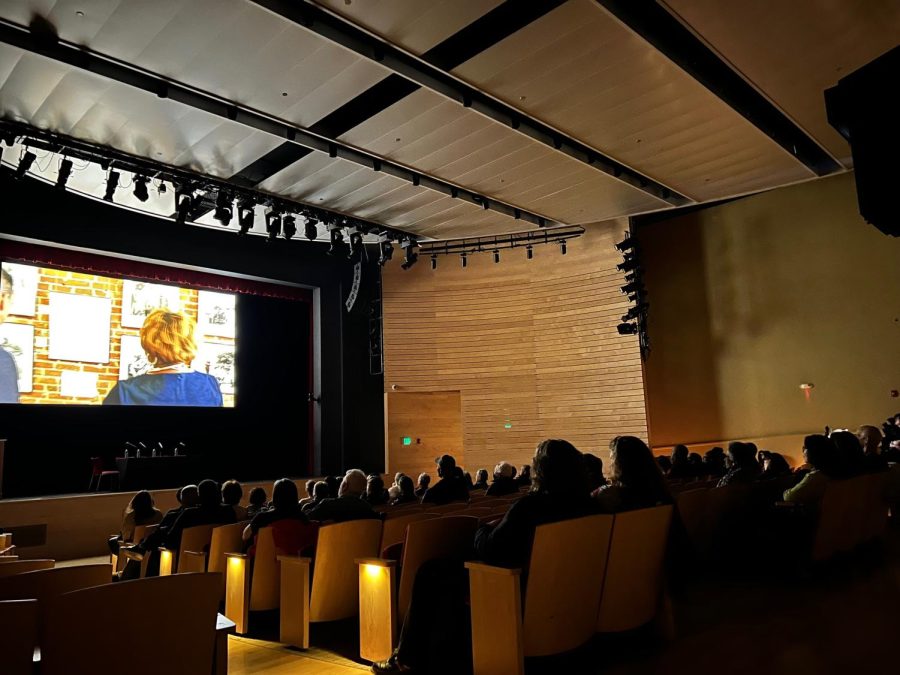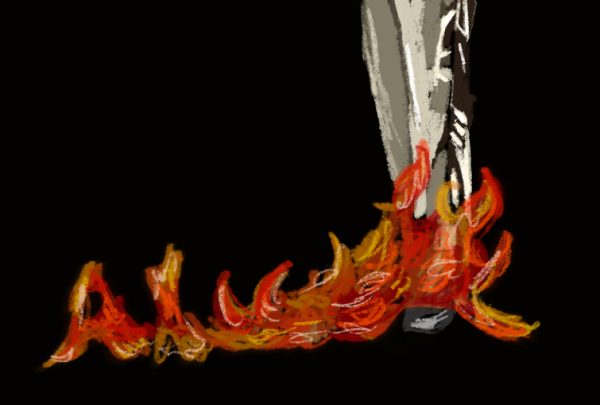“The Picture Taker” showing chronicles work of renowned civil rights photojournalist who worked undercover for the FBI
An audience in Blackman Auditorium watches “The Picture Taker,” which details the life of Ernest Withers. Lise Yasui, who spoke after the screening, is working to digitally preserve Withers’ photo collection. Photo courtesy of Gina Regonini and Diana Bronchuk
March 13, 2023
“The Picture Taker,” a 2023 documentary directed by Phil Bertelson, focuses on the life of Black photographer and undercover FBI informant Ernest Withers. Based in Memphis, Tennessee and working during the second half of the 20th century, Withers took close to 2 million photos in his lifetime. He was known as a kind man who always had a camera with him and nobody questioned Withers’s avid photography career — until after his death.
Northeastern’s Alumni Center screened “The Picture Taker” Feb. 16 in Blackman Auditorium, followed by a panel discussing Withers’ life and his contributions to the Civil Rights Movement and answering audience questions. The speakers included Emmy and Peabody Award winner Phil Bertelson; Tony Decaneas, a friend of Withers and the film’s executive producer; and Academy Award-nominated producer Lise Yasui. The discussion was moderated by Dr. Deborah Jackson, managing director of Northeastern’s Center of Law, Equity and Race.
The documentary project began in late 2006; however, Withers passed away in 2007, soon followed by the news of his FBI work. “The concept of the film, needless to say, changed,” switching focus from Withers’s legacy to his true, freshly unearthed life, Decaneas said.
Withers had been secretly supplying information on the Black community, creating suspicion around potential government involvement in events like the assassination of Martin Luther King Jr. Additionally, Withers sold many rolls of film, being the ghost photographer for dozens of important milestones during the Civil Rights Movement, such as the Little Rock Nine and Emmett Till trial, as well as underground appearances of now famous stars, including Elvis, in night clubs.
“[There is] a balance between a man’s contribution to a community, culture and really just a society at large, and his damage, if you will, to that same community,” Bertelson said. “So it was always, for me, a degree of power of how to modulate which one of those truths was bigger, and it was never one or the other.”
According to Decaneas, a colleague of Withers, his mantra was “pictures tell the story,” and Withers had three questions before taking any photo.
“One, does it hurt? Two, is it true? And three, what good does it do? If you can reconcile those three questions, take the picture.”
In the film, individuals that knew Withers discussed their reactions to his work with the FBI, saying they felt betrayed by a close friend, who was seemingly harmless with his camera, but could have potentially set them up to not succeed in their fields.
“I think the photos that really touched all of us were the ones of his community,” Yasui said; however, those could be the very photos that divulged the privacy of those around Withers.
Despite his work with the FBI, Withers played a major role in documenting and preserving the Black history of the South in a time when it was actively being erased. Although some who knew him feel hurt by his potential true intentions of photography, Withers’s family and many others are committed to preserving his legacy. Of the discovered 1.8 million photos taken over his life, only 15,000 to 18,000 have been digitized. Currently, Yasui and her team are still working on digitizing Withers’s work.
“[Withers’s family] had been offered millions of dollars by archives and collections, museums around the world,” Decaneas said. “And I thought that it was very important that, in spite of all that, they’re holding onto the legacy.”


















